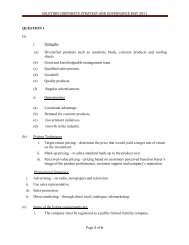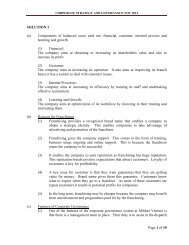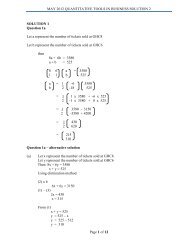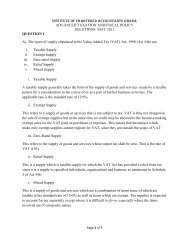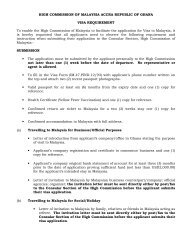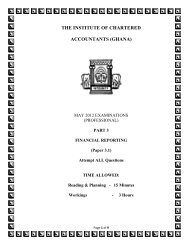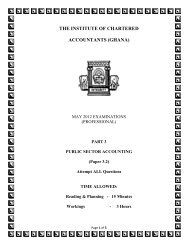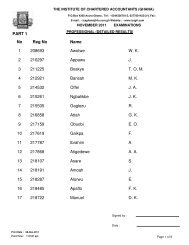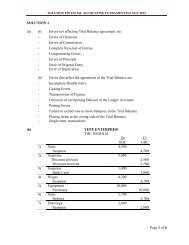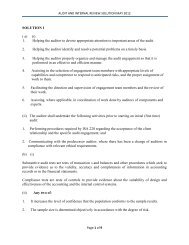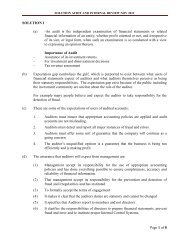(IFRS) for Small and Medium-sized Entities (SMEs)
(IFRS) for Small and Medium-sized Entities (SMEs)
(IFRS) for Small and Medium-sized Entities (SMEs)
You also want an ePaper? Increase the reach of your titles
YUMPU automatically turns print PDFs into web optimized ePapers that Google loves.
<strong>IFRS</strong> FOR SMES – JULY 2009(ii)(iii)(iv)(v)the principal locations affected;the location, function <strong>and</strong> approximate number of employees whowill be compensated <strong>for</strong> terminating their services;the expenditures that will be undertaken; <strong>and</strong>when the plan will be implemented; <strong>and</strong>(b)has raised a valid expectation in those affected that it will carry out therestructuring by starting to implement that plan or announcing its mainfeatures to those affected by it.Conclusion—An entity recognises a provision <strong>for</strong> restructuring costs only when ithas a legal or constructive obligation at the reporting date to carry out therestructuring.Example 4 Warranties21A.4 A manufacturer gives warranties at the time of sale to purchasers of its product.Under the terms of the contract <strong>for</strong> sale, the manufacturer undertakes to makegood, by repair or replacement, manufacturing defects that become apparentwithin three years from the date of sale. On the basis of experience, it is probable(ie more likely than not) that there will be some claims under the warranties.Present obligation as a result of a past obligating event—The obligating event isthe sale of the product with a warranty, which gives rise to a legal obligation.An outflow of resources embodying economic benefits in settlement—Probable<strong>for</strong> the warranties as a whole.Conclusion—The entity recognises a provision <strong>for</strong> the best estimate of the costs ofmaking good under the warranty products sold be<strong>for</strong>e the reporting date.Illustration of calculations:In 20X0, goods are sold <strong>for</strong> CU1,000,000. Experience indicates that 90 per cent ofproducts sold require no warranty repairs; 6 per cent of products sold requireminor repairs costing 30 per cent of the sale price; <strong>and</strong> 4 per cent of products soldrequire major repairs or replacement costing 70 per cent of sale price. There<strong>for</strong>eestimated warranty costs are:CU1,000,000 × 90% × 0 = CU0CU1,000,000 × 6% × 30% = CU18,000CU1,000,000 × 4% × 70% = CU28,000Total = CU46,000The expenditures <strong>for</strong> warranty repairs <strong>and</strong> replacements <strong>for</strong> products sold in 20X0are expected to be made 60 per cent in 20X1, 30 per cent in 20X2, <strong>and</strong> 10 per centin 20X3, in each case at the end of the period. Because the estimated cash flowsalready reflect the probabilities of the cash outflows, <strong>and</strong> assuming there are noother risks or uncertainties that must be reflected, to determine the present valueof those cash flows the entity uses a ‘risk-free’ discount rate based on government© IASCF 123



